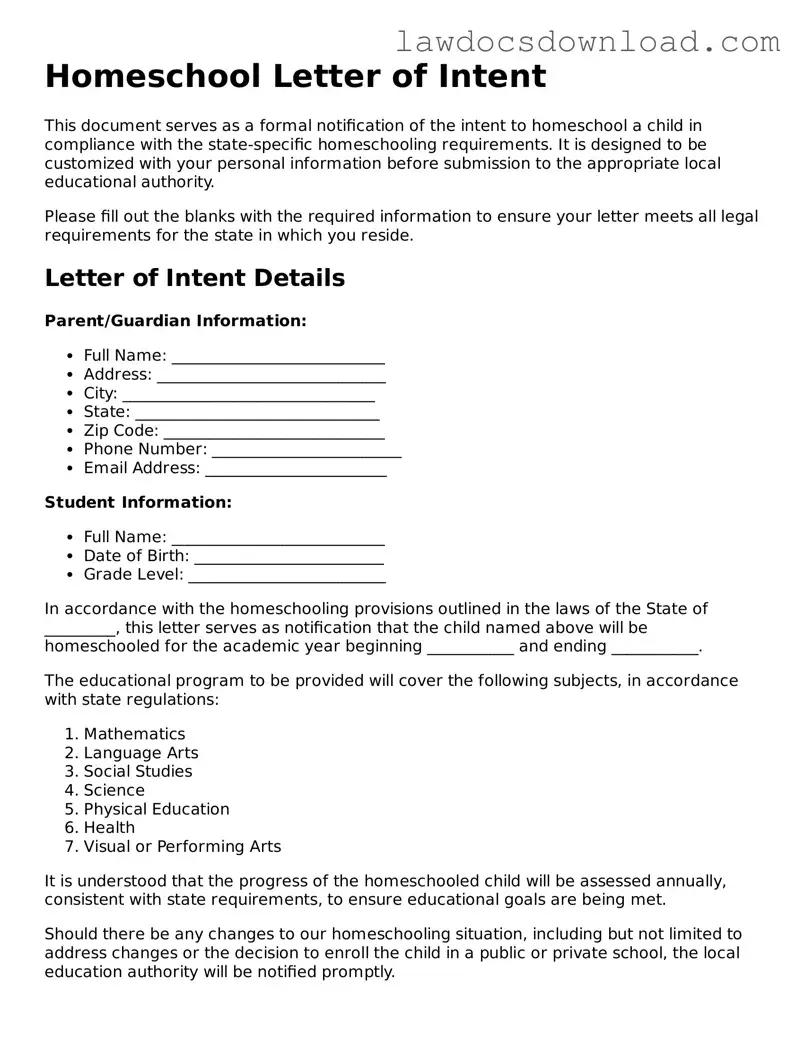Homeschool Letter of Intent
This document serves as a formal notification of the intent to homeschool a child in compliance with the state-specific homeschooling requirements. It is designed to be customized with your personal information before submission to the appropriate local educational authority.
Please fill out the blanks with the required information to ensure your letter meets all legal requirements for the state in which you reside.
Letter of Intent Details
Parent/Guardian Information:
- Full Name: ___________________________
- Address: _____________________________
- City: ________________________________
- State: _______________________________
- Zip Code: ____________________________
- Phone Number: ________________________
- Email Address: _______________________
Student Information:
- Full Name: ___________________________
- Date of Birth: ________________________
- Grade Level: _________________________
In accordance with the homeschooling provisions outlined in the laws of the State of _________, this letter serves as notification that the child named above will be homeschooled for the academic year beginning ___________ and ending ___________.
The educational program to be provided will cover the following subjects, in accordance with state regulations:
- Mathematics
- Language Arts
- Social Studies
- Science
- Physical Education
- Health
- Visual or Performing Arts
It is understood that the progress of the homeschooled child will be assessed annually, consistent with state requirements, to ensure educational goals are being met.
Should there be any changes to our homeschooling situation, including but not limited to address changes or the decision to enroll the child in a public or private school, the local education authority will be notified promptly.
I affirm that the information provided in this letter is accurate to the best of my knowledge.
Signed: ________________________________
Date: _________________________________
